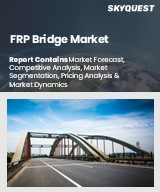
|
시장보고서
상품코드
1573144
세계의 탄소섬유 직물 시장 : 제품 유형, 원료, 최종 이용 산업, 용도, 제직 공정, 직물 중량, 기술, 리사이클 방법별 예측(2025-2030년)Carbon Fiber Fabric Cloth Market by Product Type, Raw Material (Pitch Based, Polyacrylonitrile Based, Rayon Based), End-Use Industry, Application, Weaving Process, Fabric Weight, Technology, Recycling Method - Global Forecast 2025-2030 |
||||||
탄소섬유 직물 시장은 2023년에 17억 6,000만 달러로 평가되었고, 2024년에는 18억 9,000만 달러에 이를 것으로 예측되며, CAGR 8.23%로 성장하고, 2030년에는 30억 6,000만 달러에 달할 것으로 예상됩니다.
탄소섬유 직물은 탄소섬유로 구성되는 범용성이 높은 소재이며, 내구성과 경량성이 뛰어난 직물입니다. 그 주요 용도는 항공우주, 자동차, 건설, 스포츠 용품, 풍력에너지 등 가볍고 강인한 소재가 필수적인 산업 전반에 걸쳐 있습니다. 저연비 차량 수요 증가와 항공우주 산업의 급성장은 탄소섬유 직물의 필요성을 높이고 있습니다. 또한, 풍력에너지 분야의 성장은 터빈 블레이드 제조에서 소재의 내구성과 효율성으로 인해 큰 시장 잠재력을 보여주고 있습니다. 성장에 영향을 미치는 주요 요인으로는 생산 기술의 진보, 지속가능성의 중요성 증가, 항공우주 및 자동차 분야에 대한 많은 투자가 포함됩니다. 도시화와 인프라 개척은 시장 수요를 더욱 자극합니다. 그러나 탄소섬유의 제조 비용이 높고 재활용과 폐기물 관리의 어려움이 있기 때문에 시장 성장에는 큰 제약이 있습니다. 또한, 숙련 노동자를 필요로 하는 복잡한 제조 공정은 운영상의 과제가 되고 있습니다. 이러한 장애물에도 불구하고 비용 효율적인 제조 방법과 지속 가능한 재활용 프로세스에 대한 지속적인 연구는 혁신의 잠재력을 제공합니다. 탄소섬유를 다른 복합재료와 혼합하는 하이브리드 재료의 개발에는 재료 특성을 높이면서 비용을 줄일 수있는 기회가 있습니다. 또한 로봇 공학 및 소비자 전자 제품과 같은 신흥 분야에서의 신규 용도의 개척은 유망한 벤처로 주목 받고 있습니다. 기업은 R&D 기관과의 전략적 파트너십에 중점을 두어 진보를 활용하고 혁신을 촉진해야 합니다.시장은 끊임없는 기술 혁신과 확장 전략에 견인되어 경쟁이 치열합니다. 기업은 변화하는 시장 수요와 규제 변경에 적응하면서 민첩하게 대응해야합니다. 현재의 동향은 탄소섬유 패브릭의 유망한 궤도를 시사하고 있으며, 전기자동차 제조업체와의 협력 관계 강화 등 새로운 영역을 개척함으로써 경쟁력을 높일 수 있습니다. 지속가능성과 비용 절감을 중시하는 것은 이러한 새로운 기회를 활용하는 데 매우 중요합니다.
| 주요 시장 통계 | |
|---|---|
| 기준년(2023) | 17억 6,000만 달러 |
| 예측년(2024) | 18억 9,000만 달러 |
| 예측년(2030) | 30억 6,000만 달러 |
| CAGR(%) | 8.23% |
시장 역학: 빠르게 진화하는 탄소섬유 직물 시장의 주요 시장 인사이트 공개
탄소섬유 직물 시장은 수요 및 공급의 역동적 인 상호 작용에 의해 변모하고 있습니다. 이러한 시장 역학의 진화를 이해함으로써 기업은 충분한 정보를 바탕으로 투자결정, 전략적 결정 정밀화, 새로운 비즈니스 기회 획득에 대비할 수 있습니다. 이러한 동향을 종합적으로 파악함으로써 기업은 정치적, 지리적, 기술적, 사회적, 경제적 영역에 걸친 다양한 리스크를 경감할 수 있을 뿐만 아니라, 소비자 행동과 그것이 제조 비용 또는 구매 동향에 미치는 영향을보다 명확하게 이해할 수 있습니다.
- 시장 성장 촉진요인
- 항공우주, 자동차, 해양 등 다양한 산업에서 경량 소재에 대한 수요 증가
- 탄소섬유의 제조 공정에 있어서의 기술적 진보에 의한 섬유 강도의 향상과 비용 삭감
- 재생 가능 에너지 용도의 출현이, 풍력 터빈이나 태양광 패널에 있어서의 탄소섬유 직물 수요를 촉진
- 섬유산업에 있어서의 지속가능하고 환경친화적인 제조방법에 대한 의식의 고조와 실천
- 시장 성장 억제요인
- 특수한 설비와 숙련 노동력을 필요로 하는 복잡한 제조 공정
- 공급망의 안정성을 제한하는 원료의 한정된 이용가능성
- 시장 기회
- 탄소섬유 제조 기술의 진보에 의한 제조 비용의 삭감
- 스포츠 용품이나 고성능 상품에 있어서의 탄소섬유 직물 수요 증가
- 건설 및 인프라 프로젝트에서 탄소섬유 직물의 용도 확대
- 시장의 과제
- 탄소섬유 직물의 제조 공정에 있어서의 기술적 한계
- 탄소섬유 재료의 생산과 폐기에 있어서의 환경과 규제상의 장애물
Porter's Five Forces : 탄소섬유 직물 시장을 탐색하는 전략 도구
Porter's Five Forces 프레임 워크는 시장 상황경쟁 구도를 이해하는 중요한 도구입니다. Porter's Five Force Framework는 기업의 경쟁력을 평가하고 전략적 기회를 탐구하는 명확한 기술을 제공합니다. 이 프레임워크는 기업이 시장 내 세력도를 평가하고 신규 사업의 수익성을 결정하는 데 도움이 됩니다. 이러한 통찰력을 통해 기업은 자사의 강점을 활용하고, 약점을 해결하고, 잠재적인 과제를 피할 수 있으며, 보다 강인한 시장에서의 포지셔닝을 보장할 수 있습니다.
PESTLE 분석 : 탄소섬유 직물 시장에서 외부로부터의 영향 파악
외부 거시 환경 요인은 탄소섬유 직물 시장의 성과 역학을 형성하는 데 매우 중요한 역할을합니다. 정치적, 경제적, 사회적, 기술적, 법적, 환경적 요인 분석은 이러한 영향을 탐색하는 데 필요한 정보를 제공합니다. PESTLE 요인을 조사함으로써 기업은 잠재적인 위험과 기회를 더 잘 이해할 수 있습니다. 이 분석을 통해 기업은 규제, 소비자 선호, 경제 동향의 변화를 예측하고 앞으로 예상되는 적극적인 의사 결정을 할 준비를 할 수 있습니다.
시장 점유율 분석 : 탄소섬유 직물 시장 경쟁 구도 파악
탄소섬유 직물 시장의 상세한 시장 점유율 분석을 통해 공급업체의 성과를 종합적으로 평가할 수 있습니다. 기업은 수익, 고객 기반, 성장률 등 주요 지표를 비교하여 경쟁 포지셔닝을 밝힐 수 있습니다. 이 분석을 통해 시장 집중, 단편화 및 통합 동향을 밝혀내고 공급업체는 경쟁이 치열해지면서 자신의 입지를 높이는 전략적 의사 결정을 내리는 데 필요한 지식을 얻을 수 있습니다.
FPNV 포지셔닝 매트릭스 : 탄소섬유 직물 시장에서 공급업체의 성능 평가
FPNV 포지셔닝 매트릭스는 탄소섬유 직물 시장에서 공급업체를 평가하는 중요한 도구입니다. 이 행렬을 통해 비즈니스 조직은 공급업체의 비즈니스 전략과 제품 만족도를 기준으로 평가하여 목표에 맞는 충분한 정보를 바탕으로 의사 결정을 내릴 수 있습니다. 네 가지 사분면을 통해 공급업체를 명확하고 정확하게 부문화하고 전략 목표에 가장 적합한 파트너 및 솔루션을 파악할 수 있습니다.
전략 분석 및 권장 : 탄소섬유 직물 시장에서 성공에 대한 길을 그립니다.
탄소섬유 직물 시장의 전략 분석은 세계 시장에서의 존재를 강화하려는 기업에 필수적입니다. 주요 자원, 역량 및 성과 지표를 검토함으로써 기업은 성장 기회를 파악하고 개선을 위해 노력할 수 있습니다. 이러한 접근 방식을 통해 경쟁 구도에서 과제를 극복하고 새로운 비즈니스 기회를 활용하여 장기적인 성공을 거둘 수 있는 체제를 구축할 수 있습니다.
이 보고서는 주요 관심 분야를 포괄하는 시장의 종합적인 분석을 제공합니다.
1. 시장 침투: 현재 시장 환경의 상세한 검토, 주요 기업의 광범위한 데이터, 시장 도달범위 및 전반적인 영향력 평가.
2. 시장 개척도: 신흥 시장의 성장 기회를 파악하고 기존 분야의 확장 가능성을 평가하며 미래 성장을 위한 전략적 로드맵을 제공합니다.
3. 시장 다양화: 최근 제품 출시, 미개척 지역, 업계의 주요 진보, 시장을 형성하는 전략적 투자를 분석합니다.
4. 경쟁 평가 및 정보 : 경쟁 구도를 철저히 분석하여 시장 점유율, 사업 전략, 제품 포트폴리오, 인증, 규제 당국 승인, 특허 동향, 주요 기업의 기술 진보 등을 검증합니다.
5. 제품 개발 및 혁신 : 미래 시장 성장을 가속할 것으로 예상되는 최첨단 기술, R&D 활동, 제품 혁신을 강조합니다.
또한 이해관계자가 충분한 정보를 얻고 의사결정을 할 수 있도록 중요한 질문에 대답하고 있습니다.
1. 현재 시장 규모와 향후 성장 예측은?
2. 최고의 투자 기회를 제공하는 제품, 부문 및 지역은 어디입니까?
3. 시장을 형성하는 주요 기술 동향과 규제의 영향은?
4. 주요 벤더의 시장 점유율과 경쟁 포지션은?
5. 벤더 시장 진입·철수 전략의 원동력이 되는 수익원과 전략적 기회는 무엇인가?
목차
제1장 서문
제2장 조사 방법
제3장 주요 요약
제4장 시장 개요
제5장 시장 인사이트
- 시장 역학
- 성장 촉진요인
- 항공우주, 자동차, 해양 등 다양한 업계에서 경량 소재 수요가 높아지고 있습니다.
- 탄소섬유 제조 공정에 있어서의 기술적 진보에 의해 반죽의 강도가 향상되어, 비용이 삭감된다
- 재생 가능 에너지 용도의 출현에 의해 풍력 터빈이나 태양광 패널에 있어서의 탄소섬유 직물 수요가 증가
- 섬유산업에서의 지속가능하고 환경친화적인 제조방법의 인식과 실천의 고조
- 억제요인
- 특수한 설비와 숙련된 노동력을 필요로 하는 복잡한 제조 공정
- 원재료공급 부족에 의해서 공급 체인의 안정성이 제한된다
- 기회
- 탄소섬유 제조 기술의 진보에 의해 생산 비용이 삭감된다
- 스포츠 용품이나 고성능 상품에 있어서의 탄소섬유 직물 수요 증가
- 건설 및 인프라 프로젝트에 있어서의 탄소섬유 직물의 용도 증가
- 과제
- 탄소섬유 직물의 제조 공정에 있어서의 기술적 한계
- 탄소섬유 재료의 생산과 폐기에 있어서의 환경과 규제상의 장애물
- 성장 촉진요인
- 시장 세분화 분석
- Porter's Five Forces 분석
- PESTEL 분석
- 정치적
- 경제
- 사교
- 기술적
- 법률상
- 환경
제6장 탄소섬유 직물 시장 : 제품 유형별
- 부직포
- 촙드 스트랜드 매트
- 연속 필라멘트 매트
- 직물
- 평직
- 수자직
- 능직
제7장 탄소섬유 직물 시장 : 원재료별
- 피치 베이스
- 폴리아크릴로니트릴(PAN) 베이스
- 레이온 베이스
제8장 탄소섬유 직물 시장 : 최종 이용 산업별
- 항공우주 및 방어
- 자동차
- 공사
- 스포츠 및 레저
- 풍력에너지
제9장 탄소섬유 직물 시장 : 용도별
- 항공우주부품
- 자동차 외장 부품
- 스포츠 용품
- 구조 부품
- 풍력 터빈 부품
제10장 탄소섬유 직물 시장 : 직조 방법별
- 양방향 직조
- 다축 직조
- 일방향 직조
제11장 탄소섬유 직물 시장 : 직물 무게별
- 헤비 웨이트
- 라이트 웨이트
- 미디움 웨이트
제12장 탄소섬유 직물 시장 : 기술별
- 복합기술
- 핸드 레이 업
- 프리프레그 기술
- 수지 트랜스퍼 성형(RTM)
- 진공 주입
- 비복합기술
- 브레이딩
- 니팅
- 스티치
제13장 탄소섬유 직물 시장 : 리사이클 방법별
- 소각
- 기계 재활용
- 열분해
제14장 아메리카의 탄소섬유 직물 시장
- 아르헨티나
- 브라질
- 캐나다
- 멕시코
- 미국
제15장 아시아태평양의 탄소섬유 직물 시장
- 호주
- 중국
- 인도
- 인도네시아
- 일본
- 말레이시아
- 필리핀
- 싱가포르
- 한국
- 대만
- 태국
- 베트남
제16장 유럽·중동 및 아프리카의 탄소섬유 직물 시장
- 덴마크
- 이집트
- 핀란드
- 프랑스
- 독일
- 이스라엘
- 이탈리아
- 네덜란드
- 나이지리아
- 노르웨이
- 폴란드
- 카타르
- 러시아
- 사우디아라비아
- 남아프리카
- 스페인
- 스웨덴
- 스위스
- 터키
- 아랍에미리트(UAE)
- 영국
제17장 경쟁 구도
- 시장 점유율 분석 2023
- FPNV 포지셔닝 매트릭스, 2023
- 경쟁 시나리오 분석
- 전략 분석과 제안
The Carbon Fiber Fabric Cloth Market was valued at USD 1.76 billion in 2023, expected to reach USD 1.89 billion in 2024, and is projected to grow at a CAGR of 8.23%, to USD 3.06 billion by 2030.
Carbon fiber fabric cloth is a highly versatile material composed of carbon fibers woven together to produce a durable and lightweight textile. Its primary applications span across industries such as aerospace, automotive, construction, sports equipment, and wind energy, where the need for lightweight yet strong materials is critical. The increasing demand for fuel-efficient vehicles and the burgeoning aerospace industry are driving the necessity for carbon fiber fabric. Additionally, the wind energy sector's growth continues to present significant market potential due to the material's durability and efficiency in turbine blade manufacturing. Key growth influencers include advancements in production technologies, a growing emphasis on sustainability, and significant investments in aerospace and automotive sectors. Urbanization and infrastructure development further stimulate market demand. However, the high production cost of carbon fiber, coupled with challenges in recycling and waste management, poses significant limitations to market growth. Additionally, the complex manufacturing process that requires skilled labor presents an operational challenge. Despite these hurdles, continuous research into cost-effective production methods and sustainable recycling processes offers potential for innovation. Opportunities exist in developing hybrid materials that blend carbon fiber with other composites, reducing costs while enhancing material properties. Moreover, exploring novel applications in emerging sectors, such as robotics and consumer electronics, stands as a promising venture. Companies should focus on strategic partnerships with R&D institutions to leverage advancements and foster innovation. The market is highly competitive, driven by constant innovation and expansion strategies. Businesses should stay agile, adapting to shifting market demands and regulatory changes. Current trends suggest a promising trajectory for carbon fiber fabric, and exploring new territories, such as strengthening collaborations with electric vehicle manufacturers, can provide a competitive edge. Emphasizing sustainability and cost reduction will be pivotal in harnessing these emerging opportunities.
| KEY MARKET STATISTICS | |
|---|---|
| Base Year [2023] | USD 1.76 billion |
| Estimated Year [2024] | USD 1.89 billion |
| Forecast Year [2030] | USD 3.06 billion |
| CAGR (%) | 8.23% |
Market Dynamics: Unveiling Key Market Insights in the Rapidly Evolving Carbon Fiber Fabric Cloth Market
The Carbon Fiber Fabric Cloth Market is undergoing transformative changes driven by a dynamic interplay of supply and demand factors. Understanding these evolving market dynamics prepares business organizations to make informed investment decisions, refine strategic decisions, and seize new opportunities. By gaining a comprehensive view of these trends, business organizations can mitigate various risks across political, geographic, technical, social, and economic domains while also gaining a clearer understanding of consumer behavior and its impact on manufacturing costs and purchasing trends.
- Market Drivers
- Increasing demand for lightweight materials across various industries including aerospace, automotive, and marine
- Technological advancements in carbon fiber production processes enhancing fabric strength and reducing costs
- Emergence of renewable energy applications driving demand for carbon fiber fabric in wind turbines and solar panels
- Growing awareness and implementation of sustainable and eco-friendly manufacturing practices in the textile industry
- Market Restraints
- Complex manufacturing processes requiring specialized equipment and skilled labor
- Limited availability of raw materials restricting the supply chain stability
- Market Opportunities
- Advancements in carbon fiber manufacturing technologies reducing production costs
- Rising demand for carbon fiber fabrics in sports equipment and high-performance goods
- Increasing applications of carbon fiber fabrics in construction and infrastructure projects
- Market Challenges
- Technical limitations in manufacturing processes of carbon fiber fabrics
- Environmental and regulatory hurdles in the production and disposal of carbon fiber materials
Porter's Five Forces: A Strategic Tool for Navigating the Carbon Fiber Fabric Cloth Market
Porter's five forces framework is a critical tool for understanding the competitive landscape of the Carbon Fiber Fabric Cloth Market. It offers business organizations with a clear methodology for evaluating their competitive positioning and exploring strategic opportunities. This framework helps businesses assess the power dynamics within the market and determine the profitability of new ventures. With these insights, business organizations can leverage their strengths, address weaknesses, and avoid potential challenges, ensuring a more resilient market positioning.
PESTLE Analysis: Navigating External Influences in the Carbon Fiber Fabric Cloth Market
External macro-environmental factors play a pivotal role in shaping the performance dynamics of the Carbon Fiber Fabric Cloth Market. Political, Economic, Social, Technological, Legal, and Environmental factors analysis provides the necessary information to navigate these influences. By examining PESTLE factors, businesses can better understand potential risks and opportunities. This analysis enables business organizations to anticipate changes in regulations, consumer preferences, and economic trends, ensuring they are prepared to make proactive, forward-thinking decisions.
Market Share Analysis: Understanding the Competitive Landscape in the Carbon Fiber Fabric Cloth Market
A detailed market share analysis in the Carbon Fiber Fabric Cloth Market provides a comprehensive assessment of vendors' performance. Companies can identify their competitive positioning by comparing key metrics, including revenue, customer base, and growth rates. This analysis highlights market concentration, fragmentation, and trends in consolidation, offering vendors the insights required to make strategic decisions that enhance their position in an increasingly competitive landscape.
FPNV Positioning Matrix: Evaluating Vendors' Performance in the Carbon Fiber Fabric Cloth Market
The Forefront, Pathfinder, Niche, Vital (FPNV) Positioning Matrix is a critical tool for evaluating vendors within the Carbon Fiber Fabric Cloth Market. This matrix enables business organizations to make well-informed decisions that align with their goals by assessing vendors based on their business strategy and product satisfaction. The four quadrants provide a clear and precise segmentation of vendors, helping users identify the right partners and solutions that best fit their strategic objectives.
Strategy Analysis & Recommendation: Charting a Path to Success in the Carbon Fiber Fabric Cloth Market
A strategic analysis of the Carbon Fiber Fabric Cloth Market is essential for businesses looking to strengthen their global market presence. By reviewing key resources, capabilities, and performance indicators, business organizations can identify growth opportunities and work toward improvement. This approach helps businesses navigate challenges in the competitive landscape and ensures they are well-positioned to capitalize on newer opportunities and drive long-term success.
Key Company Profiles
The report delves into recent significant developments in the Carbon Fiber Fabric Cloth Market, highlighting leading vendors and their innovative profiles. These include A&P Technology, Chomarat Group, Cytec Solvay Group, DowAksa, Formosa Plastics Corporation, Gurit Holdings, Hexcel Corporation, Hyosung Corporation, Kordsa Global, Mitsubishi Chemical Holdings, Nippon Graphite Fiber Corporation, Plasan Carbon Composites, Rock West Composites, SGL Carbon, Sigmatex, Solvay, Teijin Limited, Toray Industries, Vectorply Corporation, and Zoltek Corporation.
Market Segmentation & Coverage
This research report categorizes the Carbon Fiber Fabric Cloth Market to forecast the revenues and analyze trends in each of the following sub-markets:
- Based on Product Type, market is studied across Non-woven Fabric and Woven Fabric. The Non-woven Fabric is further studied across Chopped Strand Mat and Continuous Filament Mat. The Woven Fabric is further studied across Plain Weave, Satin Weave, and Twill Weave.
- Based on Raw Material, market is studied across Pitch Based, Polyacrylonitrile (PAN) Based, and Rayon Based.
- Based on End-Use Industry, market is studied across Aerospace And Defense, Automotive, Construction, Sports And Leisure, and Wind Energy.
- Based on Application, market is studied across Aerospace Components, Automotive Exterior Components, Sports Equipment, Structural Parts, and Wind Turbine Components.
- Based on Weaving Process, market is studied across Bidirectional Weave, Multiaxial Weave, and Unidirectional Weave.
- Based on Fabric Weight, market is studied across Heavyweight, Lightweight, and Medium Weight.
- Based on Technology, market is studied across Composite Technology and Non-composite Technology. The Composite Technology is further studied across Hand Layup, Prepreg Technology, Resin Transfer Molding (RTM), and Vacuum Infusion. The Non-composite Technology is further studied across Braiding, Knitting, and Stitching.
- Based on Recycling Method, market is studied across Incineration, Mechanical Recycling, and Pyrolysis.
- Based on Region, market is studied across Americas, Asia-Pacific, and Europe, Middle East & Africa. The Americas is further studied across Argentina, Brazil, Canada, Mexico, and United States. The United States is further studied across California, Florida, Illinois, New York, Ohio, Pennsylvania, and Texas. The Asia-Pacific is further studied across Australia, China, India, Indonesia, Japan, Malaysia, Philippines, Singapore, South Korea, Taiwan, Thailand, and Vietnam. The Europe, Middle East & Africa is further studied across Denmark, Egypt, Finland, France, Germany, Israel, Italy, Netherlands, Nigeria, Norway, Poland, Qatar, Russia, Saudi Arabia, South Africa, Spain, Sweden, Switzerland, Turkey, United Arab Emirates, and United Kingdom.
The report offers a comprehensive analysis of the market, covering key focus areas:
1. Market Penetration: A detailed review of the current market environment, including extensive data from top industry players, evaluating their market reach and overall influence.
2. Market Development: Identifies growth opportunities in emerging markets and assesses expansion potential in established sectors, providing a strategic roadmap for future growth.
3. Market Diversification: Analyzes recent product launches, untapped geographic regions, major industry advancements, and strategic investments reshaping the market.
4. Competitive Assessment & Intelligence: Provides a thorough analysis of the competitive landscape, examining market share, business strategies, product portfolios, certifications, regulatory approvals, patent trends, and technological advancements of key players.
5. Product Development & Innovation: Highlights cutting-edge technologies, R&D activities, and product innovations expected to drive future market growth.
The report also answers critical questions to aid stakeholders in making informed decisions:
1. What is the current market size, and what is the forecasted growth?
2. Which products, segments, and regions offer the best investment opportunities?
3. What are the key technology trends and regulatory influences shaping the market?
4. How do leading vendors rank in terms of market share and competitive positioning?
5. What revenue sources and strategic opportunities drive vendors' market entry or exit strategies?
Table of Contents
1. Preface
- 1.1. Objectives of the Study
- 1.2. Market Segmentation & Coverage
- 1.3. Years Considered for the Study
- 1.4. Currency & Pricing
- 1.5. Language
- 1.6. Stakeholders
2. Research Methodology
- 2.1. Define: Research Objective
- 2.2. Determine: Research Design
- 2.3. Prepare: Research Instrument
- 2.4. Collect: Data Source
- 2.5. Analyze: Data Interpretation
- 2.6. Formulate: Data Verification
- 2.7. Publish: Research Report
- 2.8. Repeat: Report Update
3. Executive Summary
4. Market Overview
5. Market Insights
- 5.1. Market Dynamics
- 5.1.1. Drivers
- 5.1.1.1. Increasing demand for lightweight materials across various industries including aerospace, automotive, and marine
- 5.1.1.2. Technological advancements in carbon fiber production processes enhancing fabric strength and reducing costs
- 5.1.1.3. Emergence of renewable energy applications driving demand for carbon fiber fabric in wind turbines and solar panels
- 5.1.1.4. Growing awareness and implementation of sustainable and eco-friendly manufacturing practices in the textile industry
- 5.1.2. Restraints
- 5.1.2.1. Complex manufacturing processes requiring specialized equipment and skilled labor
- 5.1.2.2. Limited availability of raw materials restricting the supply chain stability
- 5.1.3. Opportunities
- 5.1.3.1. Advancements in carbon fiber manufacturing technologies reducing production costs
- 5.1.3.2. Rising demand for carbon fiber fabrics in sports equipment and high-performance goods
- 5.1.3.3. Increasing applications of carbon fiber fabrics in construction and infrastructure projects
- 5.1.4. Challenges
- 5.1.4.1. Technical limitations in manufacturing processes of carbon fiber fabrics
- 5.1.4.2. Environmental and regulatory hurdles in the production and disposal of carbon fiber materials
- 5.1.1. Drivers
- 5.2. Market Segmentation Analysis
- 5.3. Porter's Five Forces Analysis
- 5.3.1. Threat of New Entrants
- 5.3.2. Threat of Substitutes
- 5.3.3. Bargaining Power of Customers
- 5.3.4. Bargaining Power of Suppliers
- 5.3.5. Industry Rivalry
- 5.4. PESTLE Analysis
- 5.4.1. Political
- 5.4.2. Economic
- 5.4.3. Social
- 5.4.4. Technological
- 5.4.5. Legal
- 5.4.6. Environmental
6. Carbon Fiber Fabric Cloth Market, by Product Type
- 6.1. Introduction
- 6.2. Non-woven Fabric
- 6.2.1. Chopped Strand Mat
- 6.2.2. Continuous Filament Mat
- 6.3. Woven Fabric
- 6.3.1. Plain Weave
- 6.3.2. Satin Weave
- 6.3.3. Twill Weave
7. Carbon Fiber Fabric Cloth Market, by Raw Material
- 7.1. Introduction
- 7.2. Pitch Based
- 7.3. Polyacrylonitrile (PAN) Based
- 7.4. Rayon Based
8. Carbon Fiber Fabric Cloth Market, by End-Use Industry
- 8.1. Introduction
- 8.2. Aerospace And Defense
- 8.3. Automotive
- 8.4. Construction
- 8.5. Sports And Leisure
- 8.6. Wind Energy
9. Carbon Fiber Fabric Cloth Market, by Application
- 9.1. Introduction
- 9.2. Aerospace Components
- 9.3. Automotive Exterior Components
- 9.4. Sports Equipment
- 9.5. Structural Parts
- 9.6. Wind Turbine Components
10. Carbon Fiber Fabric Cloth Market, by Weaving Process
- 10.1. Introduction
- 10.2. Bidirectional Weave
- 10.3. Multiaxial Weave
- 10.4. Unidirectional Weave
11. Carbon Fiber Fabric Cloth Market, by Fabric Weight
- 11.1. Introduction
- 11.2. Heavyweight
- 11.3. Lightweight
- 11.4. Medium Weight
12. Carbon Fiber Fabric Cloth Market, by Technology
- 12.1. Introduction
- 12.2. Composite Technology
- 12.2.1. Hand Layup
- 12.2.2. Prepreg Technology
- 12.2.3. Resin Transfer Molding (RTM)
- 12.2.4. Vacuum Infusion
- 12.3. Non-composite Technology
- 12.3.1. Braiding
- 12.3.2. Knitting
- 12.3.3. Stitching
13. Carbon Fiber Fabric Cloth Market, by Recycling Method
- 13.1. Introduction
- 13.2. Incineration
- 13.3. Mechanical Recycling
- 13.4. Pyrolysis
14. Americas Carbon Fiber Fabric Cloth Market
- 14.1. Introduction
- 14.2. Argentina
- 14.3. Brazil
- 14.4. Canada
- 14.5. Mexico
- 14.6. United States
15. Asia-Pacific Carbon Fiber Fabric Cloth Market
- 15.1. Introduction
- 15.2. Australia
- 15.3. China
- 15.4. India
- 15.5. Indonesia
- 15.6. Japan
- 15.7. Malaysia
- 15.8. Philippines
- 15.9. Singapore
- 15.10. South Korea
- 15.11. Taiwan
- 15.12. Thailand
- 15.13. Vietnam
16. Europe, Middle East & Africa Carbon Fiber Fabric Cloth Market
- 16.1. Introduction
- 16.2. Denmark
- 16.3. Egypt
- 16.4. Finland
- 16.5. France
- 16.6. Germany
- 16.7. Israel
- 16.8. Italy
- 16.9. Netherlands
- 16.10. Nigeria
- 16.11. Norway
- 16.12. Poland
- 16.13. Qatar
- 16.14. Russia
- 16.15. Saudi Arabia
- 16.16. South Africa
- 16.17. Spain
- 16.18. Sweden
- 16.19. Switzerland
- 16.20. Turkey
- 16.21. United Arab Emirates
- 16.22. United Kingdom
17. Competitive Landscape
- 17.1. Market Share Analysis, 2023
- 17.2. FPNV Positioning Matrix, 2023
- 17.3. Competitive Scenario Analysis
- 17.4. Strategy Analysis & Recommendation
Companies Mentioned
- 1. A&P Technology
- 2. Chomarat Group
- 3. Cytec Solvay Group
- 4. DowAksa
- 5. Formosa Plastics Corporation
- 6. Gurit Holdings
- 7. Hexcel Corporation
- 8. Hyosung Corporation
- 9. Kordsa Global
- 10. Mitsubishi Chemical Holdings
- 11. Nippon Graphite Fiber Corporation
- 12. Plasan Carbon Composites
- 13. Rock West Composites
- 14. SGL Carbon
- 15. Sigmatex
- 16. Solvay
- 17. Teijin Limited
- 18. Toray Industries
- 19. Vectorply Corporation
- 20. Zoltek Corporation



















